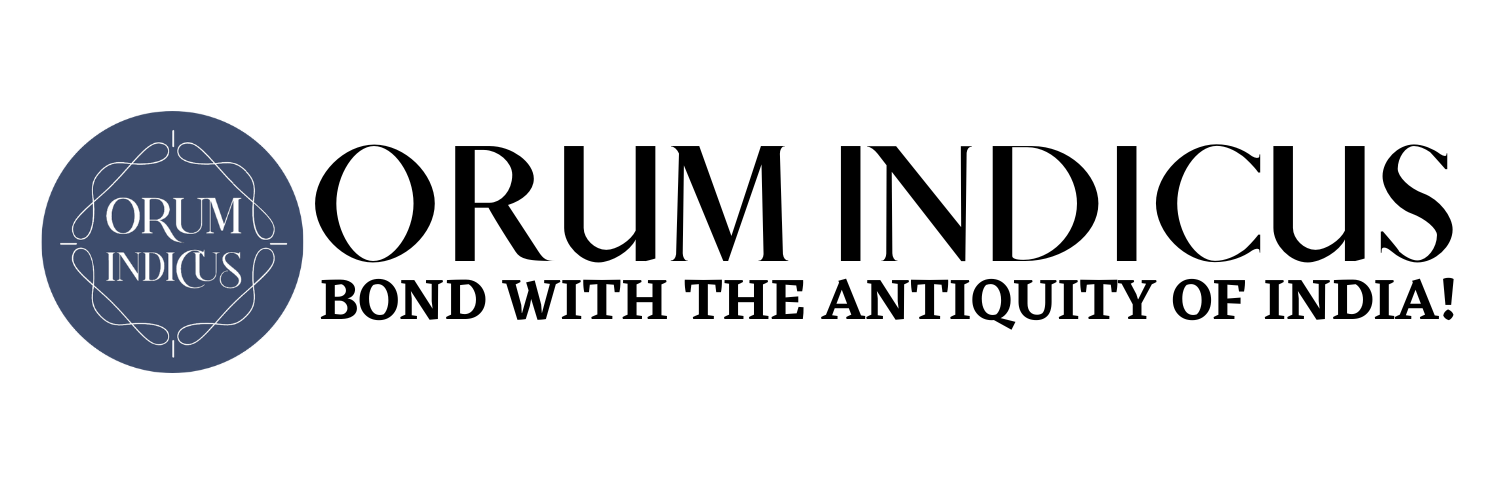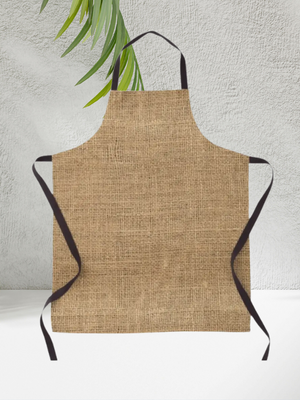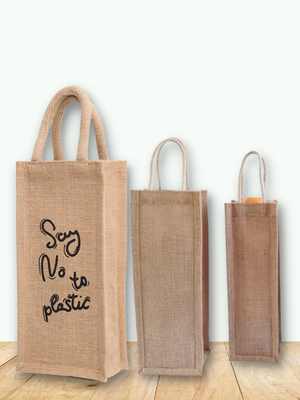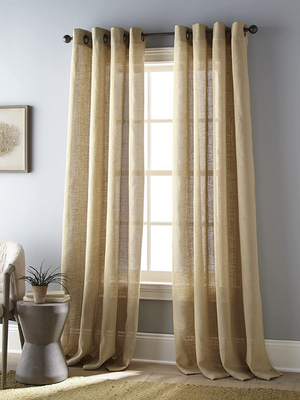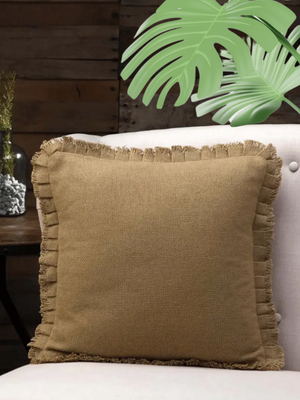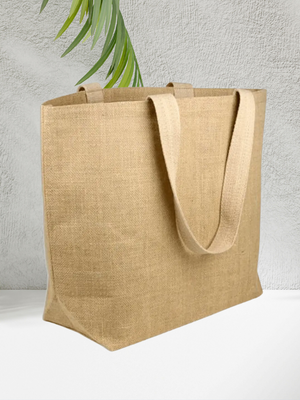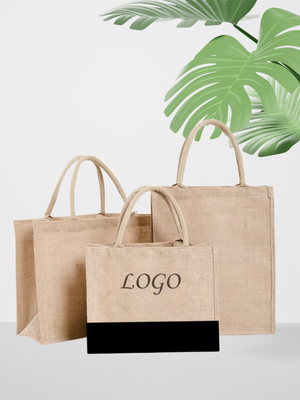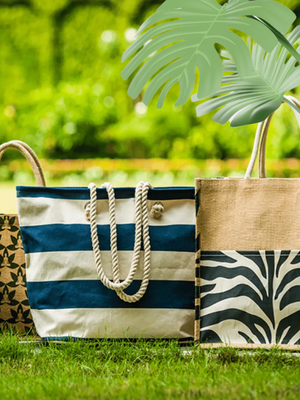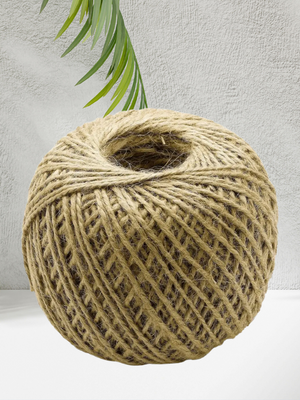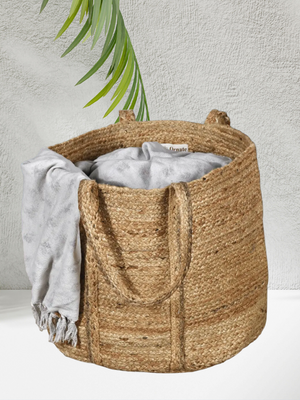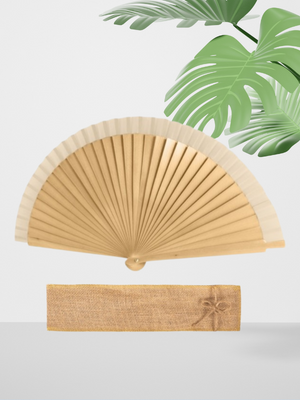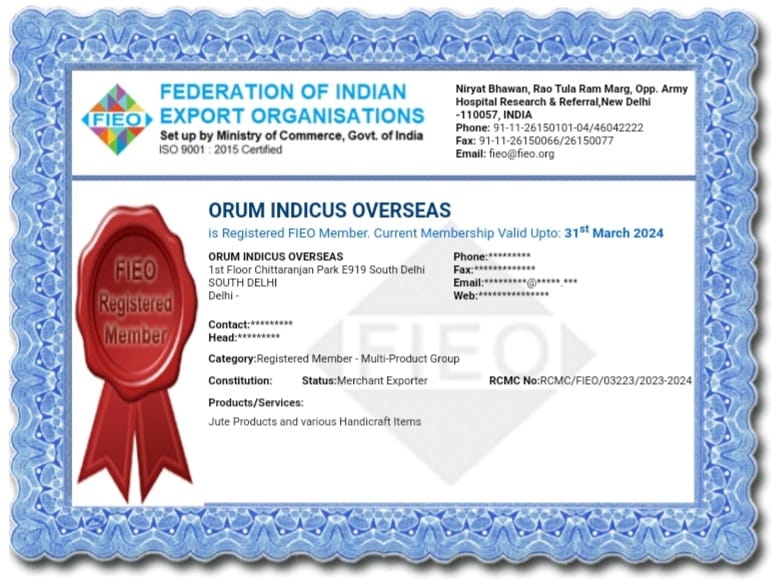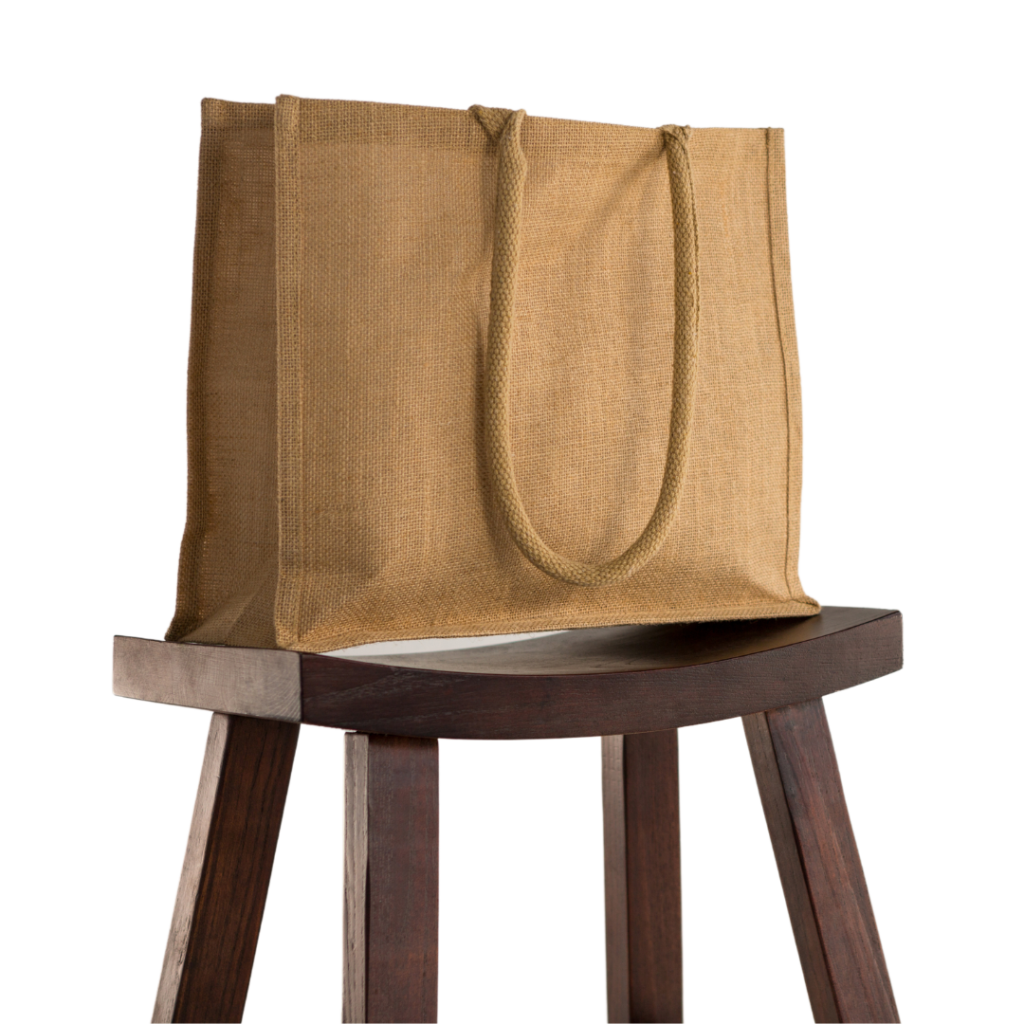
BE ASTUTE,
SWITCH TO JUTE !
Jute is a natural fibre having a tinge of gold that is silky and shiny in nature, for which it has got its name the Golden Fibre. Jute has been a human companion and has played a predominant role in the development of human civilization. One of the cheapest, most affordable, sustainable and the sturdiest of the vegetable fibres in the world, jute is produced from the bast or the skin of the plant’s stem. Jute comes from a genus of flowering plants known as the Corchorus, which are in the family of Malvaceae. These plants are indigenous to tropical and subtropical environments in Asia, Africa, and South America and require good amount of rainfall to thrive. Jute is produced to be used as textile fabric from two varieties of plants related to hibiscus and cotton: white jute (Corchorus capsularis) and tossa jute (Corchorous oblitorius). Once jute gets extracted from the crops, it is spun into sturdy course threads, which then are used to weave different types of fabrics. After cotton, jute is one of the most widely used textile fibres in the world.
Experience the Natural Beauty of Jute Products
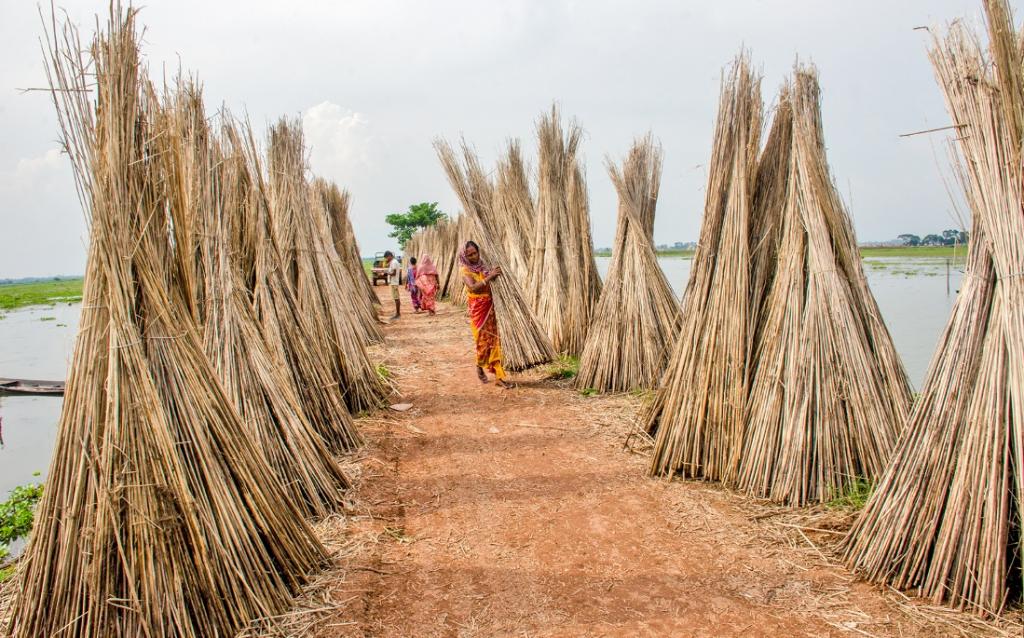
We are already aware that cotton being the most important vegetable fibre is used worldwide, and second in rank comes jute. As far as tensile strength is concerned, jute has it in great amount and it’s also high on the breathing ability of fabrics. Jute is absolutely environment-friendly and is 100% recyclable and 100% bio-degradable; it grows on earth, it serves the earth and once it dispenses its duties, it merges with the earth. Jute’s versatility is unmatched and its acceptance across all industries – be it packaging, agricultural or horticultural, construction or textile, jute is the number one choice for everyone. Burlap/hessian sacks, bags, fabric, industrial yarn, all have jute in them due to its reliability and durability. It has the ability to blend with other fibres both synthetic and non-synthetic. Being a natural product, jute’s acceptance is simply unparalleled and unrivaled.
A Brief History of the Golden Fibre
Traces of jute being used for the production of textiles can be found in the 3rd millennium B.C. in the Indus Valley Civilization. The Golden Fibre has a long history of usage for domestic and commercial purposes for producing sacks required for storing food grains, for making threads, ropes, twines, for weaving mats as well as for clothing. Archaeologists have even found during excavations that jute had even been used for making paper by our ancestors. Jute has a long history of ups and downs and it has been the main raw material of one of the oldest industries of India, the jute industry. In spite of several challenges that the jute industry has been facing at the domestic and international level, more than 3 hundred thousand workers work in jute mills today and they support more than 4 million farmer families which shows how important a cash crop jute is in India. Jute was used widely for making clothes and was worn by the villagers in West Bengal since ages. They used hand looms and hand spinning wheels for weaving clothes. The first jute mill was stared in Rishra, West Bengal in 1854. Ropes and twines made of jute were also used by the local population for agricultural, commercial and household activities. The commercial value of jute was first realized by the Dutch and the French who transported jute from Bengal to Europe.
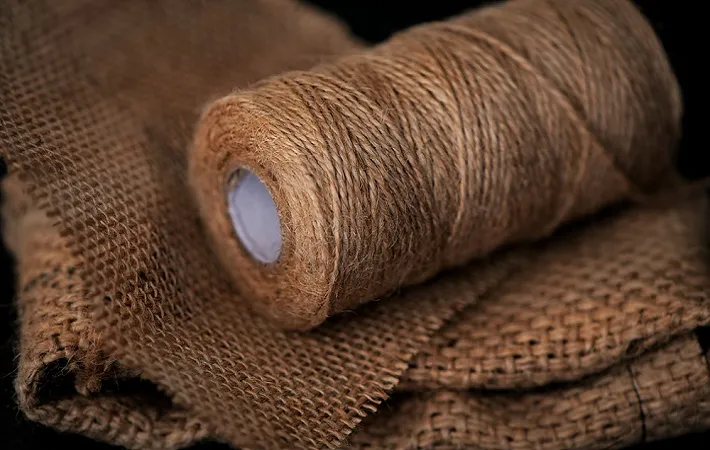
They started trading mainly in raw jute in the 19th century. After the fall of the British Empire and the Independence of India in 1947, Calcutta or the present day Kolkata and its suburban areas were the major jute manufacturing centres of the world and were capable enough to meet the worldwide demand for jute and jute products. Till this day, the state of West Bengal maintains the status of the highest jute producing state in India followed by Bihar, Assam, Andhra Pradesh, Odisha, Meghalaya, Nagaland, Tripura and Uttar Pradesh.
Jute Producing Countries worldwide
At the global level, countries where the best jute in the world is found are in West Bengal, India and in Bangladesh. Every household in this region uses some jute product of the other due to its ready availability, environment friendliness and affordability. Jute has manifold advantage – its moisture regain is not very high, it has good anti-static, acoustic and insulating properties and has a low thermal conductivity. Other countries involved in jute production in the world other than India and Bangladesh are, China, Cote d’Ivoire, Brazil, Myanmar, Uzbekistan and Thailand. Some countries in south-east Asia and Brazil also produce jute. Two major varieties of jute available are dark jute and white jute. In West Bengal the jute crop that’s produced is brownish while the ones grown in Bangladesh have a golden white shade in them. The jute crop produced in India that has a brownish colour is considered to have more tensile strength than it’s whitish counterpart and is more in demand in the international market than the whitish fibres produced in Bangladesh. The biggest producer of jute is our Nation India that produces around 70% of the world’s jute. In India jute is mainly produced in the eastern regions i.e. in West Bengal, Bihar, Assam, Tripura, Meghalaya, Odisha and in the south-eastern state of Andhra Pradesh. At present there are around 94 jute mills in India out of which 70 are in West Bengal.
Some Amazing Facts about the Golden Fibre
It’s quite amazing to learn that jute leaves are also used for consumption in many parts of the world including the Philippines, Nigeria and other parts of Africa. Even in some parts of India there are various preparations that are made with jute leaves. You’d be amazed to know that jute leaves are often used as thickening agents in stews and soups! Due to it’s medicinal properties, jute leaves are also used in medicines in various parts of the Middle East and Africa, as it’s considered to be an adequate source of iron, beta-carotene, folate, riboflavin, niacin, vitamin A, C and E and dietary fibres. Jute is considered to possess anti-inflammatory properties and is effective in curing cold, asthma, problems related to acne as well as arthritis.
Product Gallery
PLACE A BULK ORDER WITH US
Whether you want to place a large customized order for a single item or an assortment of multiple handicraft products, we can work things out for you ! For years we have been successfully delivering customized orders for our clients and satisfying their expectations – so just state your requirements to us and relax, we will handle the rest for you.
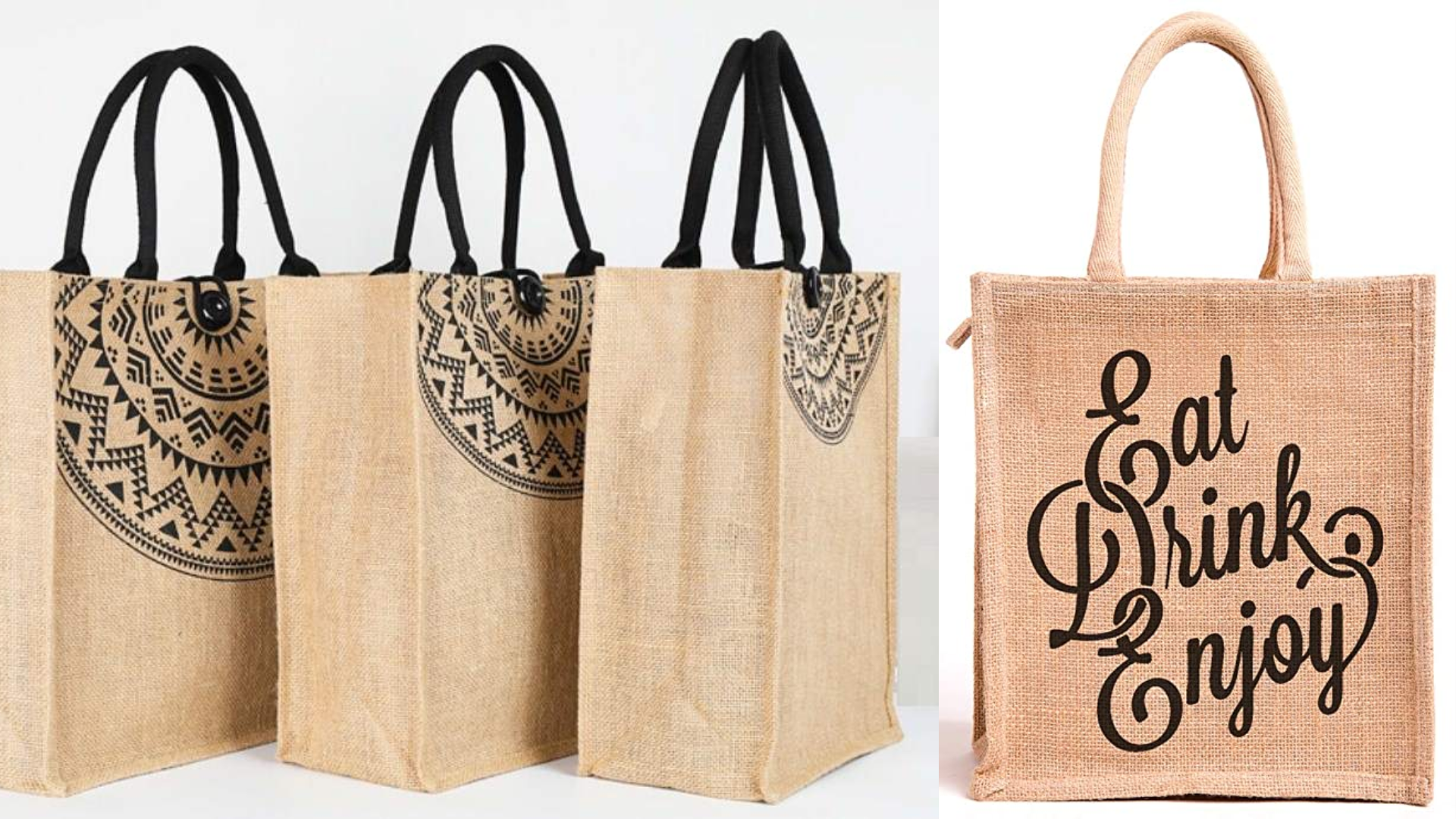
Product Costume
Our entire range of jute products are made from 100% natural jute using sustainable manufacturing techniques. All our products are eco-friendly as well as biodegradable.
Quality Products
We are committed to providing handicraft products to our clients without any compromise on the quality.
100% Guarantee
The genuineness of our products is their biggest guarantee.
Price
Quality is what we mainly focus on along with a competitive pricing structure.
Online Support
We are always available for you to answer all your product-related queries.
Authentic Local Handicrafts
Experienced
Artisans
